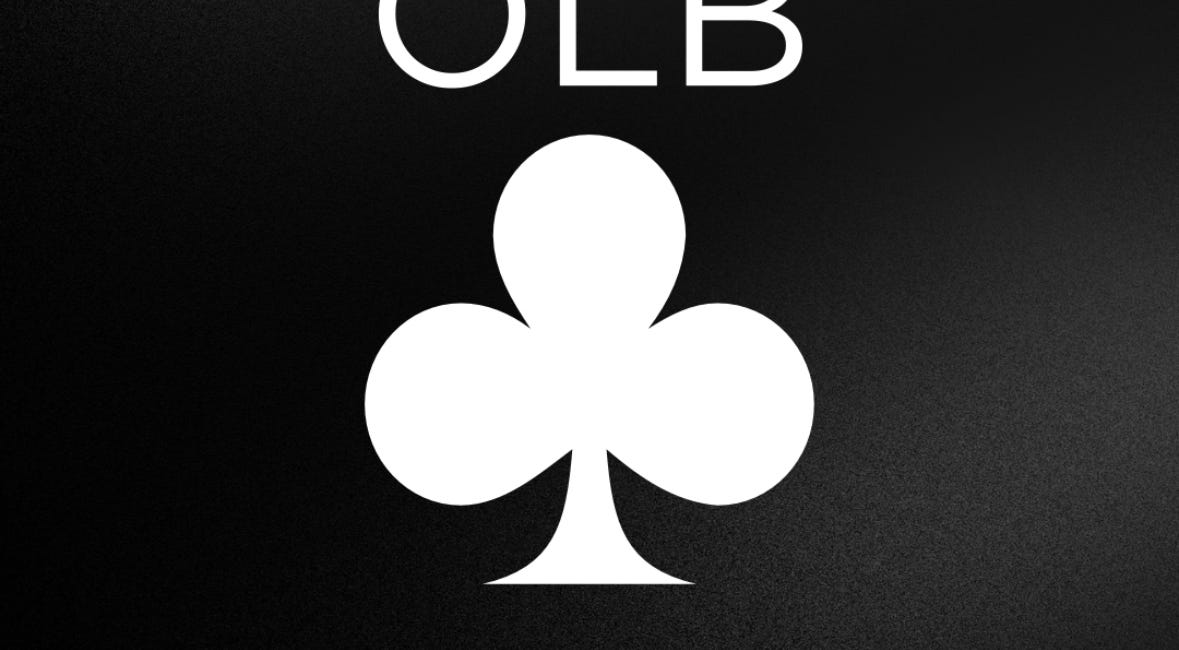Terms of the Day #1 - Deep Dive into "The State of Private Credit in 2025"
A summary of some of the key terms/abbreviations used in our latest post
Introducing…...OLB Terms of the Day, a new series that will summarize terms/abbreviations from prior posts to help with reading comprehension, and also to highlight new terms used in the private credit industry that you may be unfamiliar with. As the first in the series, let’s touch on some of the abbreviations used in our latest post “The State of Private Credit in 2025”. If you haven’t read that one, link to that article can be found below.
The State of Private Credit in 2025
OLB readers, first and foremost it’s been far too long since our last post. As you might expect, OLB is a passion project and life got in the way. Going forward, I plan to prioritize getting back into a weekly/bi-weekly cadence of posts to the best of my ability. OLB was started because having spent the majority of my career in private credit, I wanted …
Terms of the Day
SOFR - From the article, “SOFR rates came down from a peak of 5.4% in Q3 2023 - Q2 2024 and are sitting at a cool 4.3% as of Q1 2025.” SOFR is a benchmark index that is used to price loans in the private credit market. It stands for the Secured Financing Overnight Rate, and represents the cost to borrow cash overnight collateralized by US treasury securities (low risk assets). In other words, this is about as risk-free as risk-free can get, since the borrowing is secured by US government debt. SOFR rates are currently around 4.2%, so when loans are priced at SOFR + 500bps, you would add that 4.2% to the coupon for an all-in interest rate of 9.20%. In the not too distant past, LIBOR was the standard base rate for loans in the private credit market, but it was phased out in 2023, and now almost everything is priced based on SOFR.
QE (Quantitative Easing) - From the article, “Rates are still elevated relative to the post-COVID, QE-fueled years of near-zero rates.” Quantitative Easing relates to a type of monetary policy used by central banks to stimulate the economy. In a QE cycle, central banks buy assets such as US Treasuries (or even mortgage-backed securities) from financial institutions. This has a two-fold effect - (1) the money supply is increased, as more cash enters the system (since central banks are purchasing these assets with cash), and (2) demand for these securities increases. As we know, when demand increases, price increases, and yield is negatively correlated with price - so prices go up and yields fall, including US Treasury rates and typically mortgage rates along with it. Economic activity typically picks up as well because debt costs are lower, and financial institutions have more cash to invest, which generally results in greater business/investment activity, more people buy homes, which increases home values, etc. - it’s a waterfall effect. The FED used QE extensively following the Global Financial Crisis in 2008 and also during the COVID pandemic in 2020, which is why rates were very low during these periods. The opposite of QE is QT (Quantitative Tightening), which is esssentially the opposite - the FED stops buying securities and allows its existing holdings to run off. This decreases the money supply as securities run off and are not replaced, decreases total demand in the system, and results in rising rates. We are currently in a QT cycle, and we have been since June 2022, when the FED realized inflation was rising, in part due to its QE policies from the post-COVID years.
P&I (Principal & Interest) - From the article, “credit managers are getting a bit more aggressive on leverage now that there’s more cushion on the P&I front.” P&I stands for principal and interest, which are the debt service components associated with a loan. Generally when a company takes out a loan, they repay principal through amortization, and they pay interest on the balance of the loan. Annual P&I is an important metric that represents the cash costs of a loan (assuming no PIK component to the coupon - see #4 below). It’s used in the Fixed Charge Coverage calculation, other debt service coverage ratios, and it’s also the main difference between “unlevered free cash flow” and “levered free cash flow”. Bottom line is that annual P&I factors into a ton of structuring considerations, including how much leverage you can put on a business, and how much cushion you have from a coverage perspective out of the gates. P&I is impacted by a number of variables - current SOFR rate, the interest rate spread over SOFR, amortization rates, PIK interest, etc. - all of which you’ll model out for essentially every deal you work on.
PIK - From the article, “Lenders are also getting creative in terms of structuring - adding a PIK component to the coupon, more instances of amortization deferrals/holidays for a few quarters post-close.” PIK stands for paid-in-kind, which is a form of interest. Borrowers can pay interest two ways - in cash, or in PIK, where the interest payment is accrued onto the balance of the loan. If a loan’s coupon is 100% PIK, there are no cash interest payments required to be made by the company, so it’s a super flexible way to preserve cash. The flip side is that the payments are accrued onto the loan balance, which increases the interest payments going forward (compounding effect). PIK is often used in the VC/start-up market, where a business may not generate sufficient cash flow to service debt, but doesn’t want to dilute themselves through an equity raise. We see it in the private credit market too, typically in the mezzanine/subordinated part of the market, or for distressed Borrowers. Direct lending firms rarely use PIK interest, except for in distressed scenarios, although there was a period of time in 2023 (when SOFR rates were at their highest in decades) that some firms were using PIK to gain a competitive edge in their financing proposals.
Amortization Deferrals/Holidays - From the same section of the article as #4, “Lenders are also getting creative in terms of structuring - adding a PIK component to the coupon, more instances of amortization deferrals/holidays for a few quarters post-close.” An amortization holiday typically refers to a period of time where amortization payments are not required to be made. Amortization payments are payments of principal on the loan, and are typically very low in the middle market private credit (1% per year). Typically, amortization kicks in during the first quarter after a deal closes, but some deals are getting done with no required amortization payments for 4-8 quarters after close (1-2 years), which is the “holiday” period. While minor, it does represent cash savings to the Borrower. Lenders generally want their loan principal repaid, and amortization is a way to accomplish that and derisk the loan over time, so deferring amortization increases risk/exposure for the lender, and PC firms generally don’t want to defer amortization as a result. Some sponsors argue that a holiday makes sense because timing lines up better with Delayed Draw Term Loan (“DDTL”) commitment periods, which is essentially capital that is committed to a company but not yet funded. Sponsors make the argument, why am I repaying the Term Loan via amortization while I still have unfunded capital commitments from the DDTL - I can just draw on the DDTL to offset it. A fair point, but who’s right in this case? As always, the market will tell you - what ultimately clears - or whoever has more negotiating leverage on the deal (my best guess would be the Sponsor, lol).
And that’s a wrap! Let me know if you liked today’s format, we’ll be sure to keep up with it along with our regularly scheduled articles. Also, you can always refer to our post 50 Terms You Must Know as a Credit Investor where we may have covered some of these topics. That’s always a helpful reference.
If you enjoyed today’s post, the best way to support us is to share our page with your friends/colleagues to spread the word. Also consider becoming a subscriber (it’s free!) to never miss a post. If you are already a subscriber, consider upgrading to paid to support the team.
-OLB




